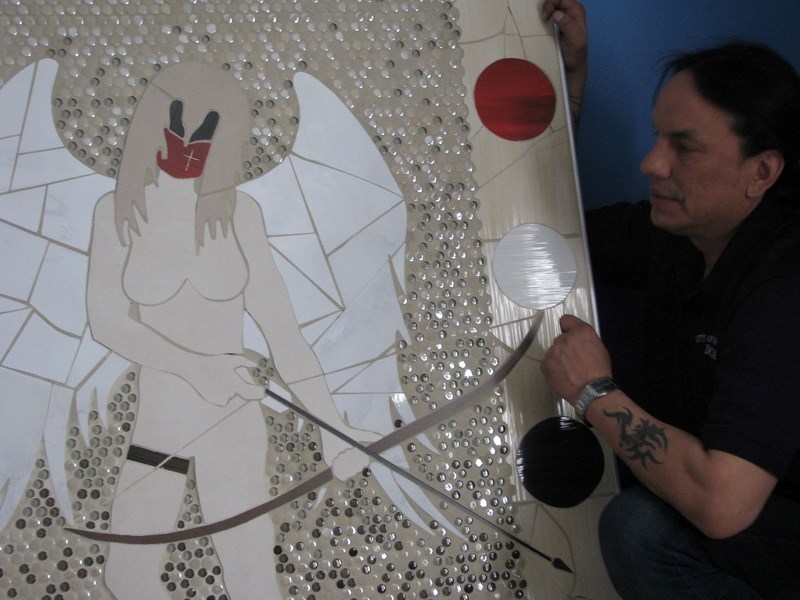She’s an angel and a warrior, standing amid a field of round stones. Even if she seems to be wearing a mask, she has many faces and all of them scream for justice and peace.
That’s the image to be found on the new and immense tile art piece that Wayne Ashley has been producing recently. The intricately designed tile mosaic monument for missing and murdered aboriginal women is a touching work of symbolism and hope, one that the artist intends to help the spirits of the dead to find their rest and to help facilitate the healing process for so many families who have lost their loved ones.
Wayne Ashley said that he was ultimately compelled to offer this creation.
“It had to be built,” he said, just as he always does.
The aboriginal artist is well known for how he responds to tragic events in his community and around the world. He has made and donated other tile monuments for the unmarked graves at the Holy Cross Cemetery just outside of St. Albert, for the victims of 9/11 and the school shooting in Newtown, Mass., and most recently for the St. Albert RCMP detachment in memory of Cst. David Wynn after he was killed in the line of duty in January.
“When something horrible happens, I’m going to put it in stone,” he declared, later adding, “I build monuments for crimes against humanity. My mission is never-ending.”
The former tile worker has practically dedicated his life to spiritual healing through his art.
He had already heard many of the stories of missing women from the news but it took a meeting with organizers with Project SNUG to spur him into action. The outreach program partners with various agencies (including the Edmonton Police Service, Poundmaker's Lodge, and Alberta Mental Health) to specifically focus on sex trade workers and assist with their well-being.
‘Snug’ is a term that refers to the gentle encouragement and assistance to help people in high-risk situations to move towards better lives.
From there, he met with some of the families of the missing and murdered women.
“They were telling me all the stories about the pain and suffering that they went through.”
The winged figure with a bow and arrow is surrounded by stones of different colours, each with a different meaning. Some are for victims whose killers were caught and sentenced. Others are for those whose killers are still unknown, or where evidence is lacking to make the connections. Everything is symbolic, he says, and he intends to make it even more personal.
This one panel is the first phase in the project, he continued, noting that he’s working on adding names to the project.
He’s also in need of public assistance to complete the rest of the monument. Work like this takes a lot of time and money, most of which comes straight out of his pocket.
“It’s not a burden; it’s an honour,” he stated.
Over the years, he has donated an estimated $2.5 million worth of art. He has asked people who are interested in helping to offer their donations at the Sacred Heart Church of the First Peoples, located at 10821 96 St. in Edmonton. That’s where the first panel is on display for the time being. A permanent home for the completed project has yet to be determined.




